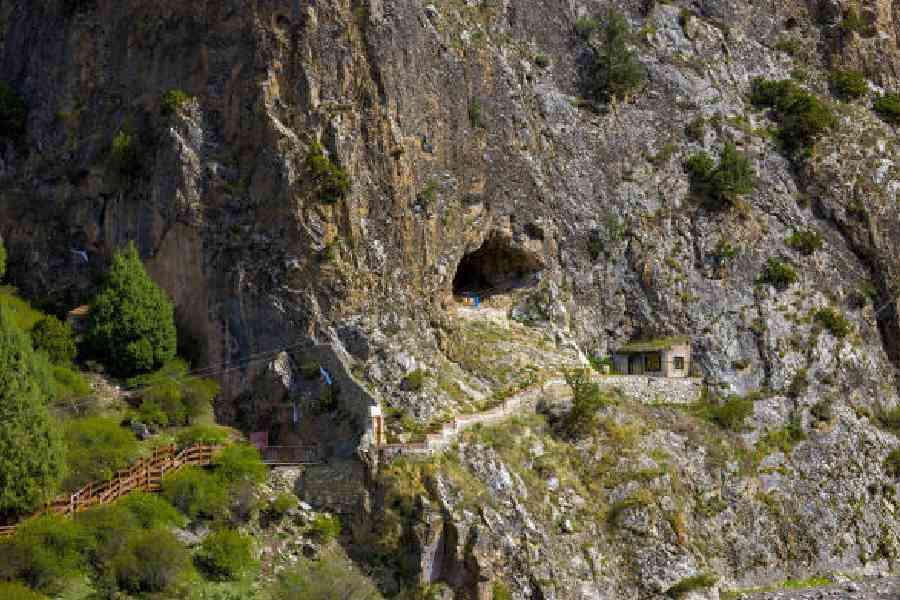The Baishiya Karst Cave is not an easy place to call home. It is nestled on a steep rocky slope on the Tibetan Plateau, 10,700 feet up, where oxygen is thin and the climate cold and dry. But a series of expeditions have demonstrated that it was home to one of the most mysterious branches of humanity: a Neanderthal-like group of people called the Denisovans.
Since 2010, scientists have painted a murky picture of Denisovans based on just three teeth, a few bone fragments and traces of DNA. Mystery has shrouded much of their existence.
But researchers who have dug a few small holes into the Baishiya Karst Cave have uncovered a wealth of clues about Denisovans. In a recent paper, they reported that for more than 1,00,000 years, Denisovans hunted or scavenged a wide range of animals on the Tibetan Plateau, from blue sheep to snow leopards and even golden eagles. They not only ate the animals, but probably skinned their hides for clothing to stay warm.
The first evidence of Denisovans turned up in the Denisova Cave in Siberia. DNA from a single tooth and a pinkie bone showed that the group belonged to a lineage distinct from modern humans and Neanderthals.
Millions of living people carry some Denisovan genes, geneticists later discovered, indicating that modern humans interbred with them, along with Neanderthals, before the two groups disappeared.
The Tibetan cave had been a Buddhist sanctuary for centuries. In 1980, a monk who came there to pray noticed a part of a jaw on the ground. The specimen languished in a museum drawer for years until Dongju Zhang, an archaeologist at Lanzhou University, China, gave it a closer look.
The jaw looked human but lacked some key features, like a prominent chin. The two molars still rooted were larger than human teeth. Zhang suspected it might be Denisovan. So she and her colleagues searched the Tibetan jaw for DNA. The scientists then compared the protein structure to the collagen genes of modern humans, Neanderthals and Denisovans. The best match was the Denisovan gene.
In 2016, Zhang began leading expeditions to the cave to learn more about the findings.
The expeditions revealed that the jaw must have been over 1,60,000 years old. The sediment also yielded four fragments of Denisovan DNA. The oldest came from a layer that formed roughly 1,00,000 years ago, and the youngest from a layer that formed between 48,000 and 32,000 years ago.
If that were true, it would raise the possibility that modern humans and Denisovans had contact on the Tibetan Plateau. Archaeologists have found stone blades on the plateau that are at least 30,000 years old and distinctive to modern humans. As Zhang and her colleagues dug deeper, the researchers also found thousands of bone fragments in the holes. But they had no idea what species the pieces belonged to.
The researchers ground up the samples and found enough collagen to identify 2,005 bones. One of them, a rib fragment, contained collagen from a Denisovan. The rib came from the same layer of sediment that yielded the most recent Denisovan DNA.
Samantha Brown, an anthropological scientist at the University of Tübingen in Germany who was not involved in the study, said that finding both the DNA and rib in the same layer strongly supported the existence of Denisovans at such a recent time in Tibet.
But Tom Higham, an archaeological scientist at the University of Vienna, Austria, said it was unfortunate that Zhang’s team had not been able to find any DNA in the rib, nor carbon that they could use to precisely determine its age.
NYTNS











